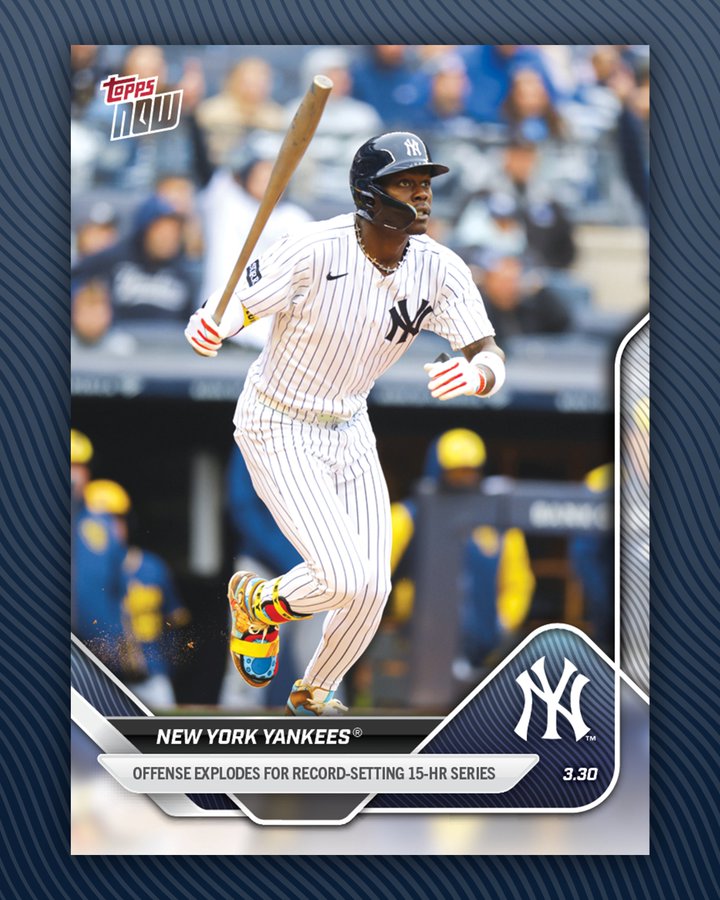Baseball has always been a game that celebrates the long ball. Who doesn’t remember the electrifying thrill of a home run hitting the stands, or the cheers that erupt when a player rounds the bases after a monumental hit? It seems the sport has now fully embraced this passion for power, and not just in gameplay but also in the memorabilia market. The latest development? Torpedo bats—an innovation that is shaking up both the sport and the world of baseball card collecting in a major way.
These uniquely designed bats, ominously dubbed “torpedoes,” are sweeping through the baseball world, offering hitters an unprecedented advantage. With aerodynamic curves and meticulously individualized specifications for each batter, these bats transform even mere mortals into home-run heroes. Just inquire with the Milwaukee Brewers, who bore witness to the New York Yankees launching an astounding fifteen homers in their opening series—a jaw-dropping nine in one game alone. For pitchers, the outlook is bleak; they may want to start revising their resumes or perhaps even debate a career change to avoid the onslaught.
From a fan perspective, watching the ball soar clear out of the stadium is exhilarating; however, for pitchers, these new bats translate to nightmares on the mound. It’s a contentious time in baseball, as these innovations challenge the balance of the game. Yet, amidst the chaos on the field, there’s a silver lining for one particular group—baseball card collectors.
For those invested in the card trading world, the mantra is shifting—bet big on hitters, especially those wielding torpedo bats. The mere announcement of these bats’ capabilities has already caused a stir in the card market, with values soaring like a well-hit ball on a clear summer’s day. Case in point: Yankees powerhouse Aaron Judge. Even though he hasn’t yet adopted the torpedo technology, the spectacular showing from his teammates alone has made his cards skyrocket in value. Clearly, when the spotlight is on your team for cracking baseballs into orbit, collectors don’t fuss over particulars.
But what does this mean for the pitchers, especially those whose rookie cards were once heralded as golden tickets? Last year, the card value of pitchers like NL Rookie of the Year Paul Skenes was steadily on the rise. However, the sudden popularity and effectiveness of the torpedo bats could mean a swift plummet for these cards, going down almost as quickly as a poorly thrown knuckleball. This shake-up ripples down to prospects too, like Jackson Jobe from the Detroit Tigers and Roki Sasaki from the Dodgers. Unless Major League Baseball steps in with some sort of regulation, these young talents might find their collectible stock dipping before their eyes.
Of course, there’s also the enigma that is Shohei Ohtani—the modern-day baseball superhero. Enthralling fans not only with his arsenal from the pitcher’s mound but also with his prowess at the plate, Ohtani’s ambidextrous talent makes him an anomaly in the current market. If the torpedo bat proves to be as life-altering as it seems, Ohtani might just pivot to prioritize hitting even further. If that happens, we can only imagine what it means for his already highly sought-after baseball cards.
As the dust begins to settle on this latest development, it’s becoming clearer that the landscape for collectors has dramatically changed. The shift towards prioritizing hitters, particularly those taking advantage of the torpedo bat technology, is not merely a temporary craze but rapidly establishing itself as a new normal. Pitchers, once the golden allure of many a collector’s folder, are now getting benched metaphorically in favor of the big bats.
Collectors, be on alert—if you haven’t already, it might be time to reassess your card portfolios. Sluggers are not only where the game’s action is heading; they’re now where the smart money lies.
